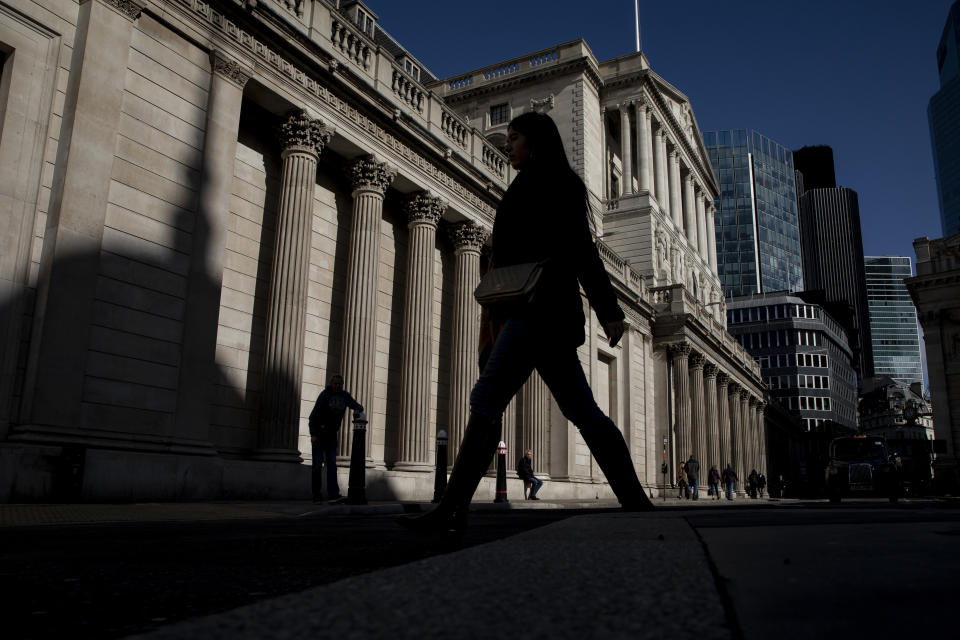Coronavirus: Bank of England holds rates steady and expands bond-buying by £100bn

The Bank of England (BOE) on Thursday expanded the size of its bond-buying programme by £100bn ($124.9bn) but voted to hold its benchmark interest rate steady, eschewing a potentially controversial move into negative interest rates.
Announcing the move, the bank cited “the severe economic and financial disruption” caused by the coronavirus pandemic and the “unusually uncertain” outlook for the country’s economy.
Since the onset of the crisis, the bank’s Monetary Policy Committee has already twice cut its benchmark interest rate to 0.1% from its previous level of 0.75%.
The bank’s move on Thursday means it has now added £300bn in new quantitative easing measures since early March, increasing the target of its Asset Purchase Facility to £745bn.
All nine members of the committee voted to hold the benchmark rate steady and to continue with the asset-purchasing programme, which sees it buy both UK government bonds — in turn lowering the cost of state borrowing — and investment-grade corporate bonds.
READ MORE: UK government to spend £4.5m on ‘shock and awe’ Brexit ad campaign
Just one member, chief economist Andy Haldane, voted to oppose the move to increase the target of the facility by an additional £100bn.
While the increase represents an overall expansion, the bank said the rate of purchases could now be conducted “at a slower pace,” noting it expected the total stock of purchases to reach £745bn by the end of the year.
At the previous pace, the facility would have run out of firepower by early September. The bank nevertheless noted that the programme could be expanded if needed.
While Thursday’s moves were broadly in line with expectations, some analysts had expected more aggressive action.
Calling the moves “the bare minimum to satisfy the market,” Neil Wilson, the chief markets analyst at Markets.com, said the bank “could have been a little bit braver.”
Minutes of the meeting indicate that the committee did not discuss the possibility of pushing its benchmark interest rate into negative territory.
The reluctance to implement negative rates comes even as the UK inflation rate plummeted to 0.5% in May, well below the bank’s 2% target.
By forcing banks to pay to hold their money at the central bank — instead of earning interest on their deposits — negative rates would in theory encourage banks to lend more, but there is considerable debate about wider effects.
Thursday’s meeting of the committee is the first since data showed that UK economic output declined by over 20% in April, by far the sharpest contraction on record.
READ MORE: Lloyd's of London and Greene King apologise over slavery links
The bank said that more recent evidence suggested that UK gross domestic product (GDP) had started to recover since April, citing payments data and its implication for consumer spending and housing activity.
But it warned that the labour market had “weakened materially” and said that a greater number of workers than it had predicted are expected to have been furloughed in recent months.
Evidence, the bank said, is consistent with a “weak outlook” for employment. “Some households are also worried about their job security,” the bank said.
The bank, which in May predicted an unprecedented blow to the global economy in the second quarter, said on Thursday that it now thought the impact would be “less severe than expected.”
“There are signs of consumer spending and services output picking up, following the easing of COVID-related restrictions on economic activity,” it said.
It warned, however, of the risks from the spread of coronavirus in emerging markets and of a second wave of coronavirus infections.

 Yahoo Finance
Yahoo Finance 
